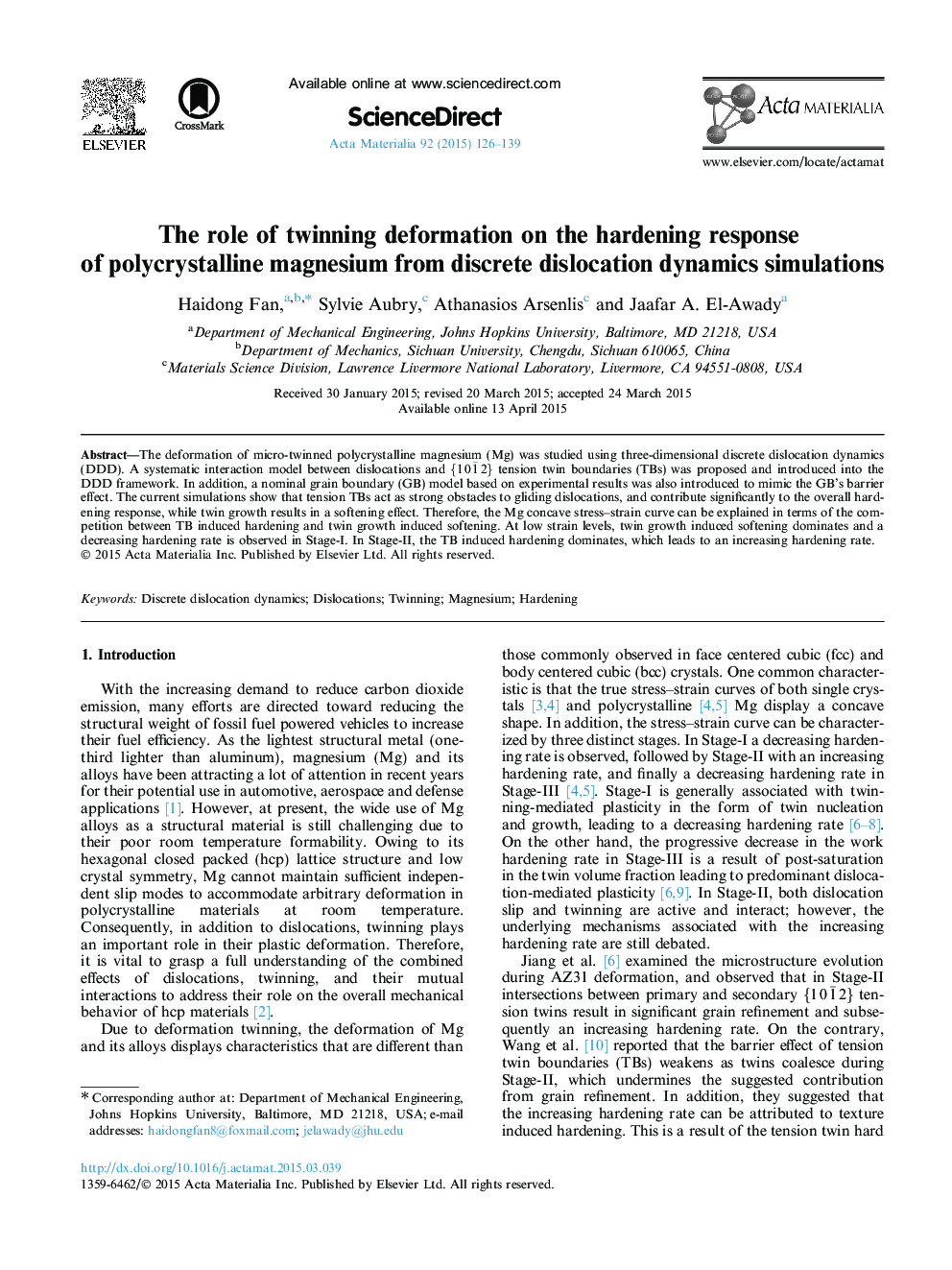| Article ID | Journal | Published Year | Pages | File Type |
|---|---|---|---|---|
| 1445392 | Acta Materialia | 2015 | 14 Pages |
The deformation of micro-twinned polycrystalline magnesium (Mg) was studied using three-dimensional discrete dislocation dynamics (DDD). A systematic interaction model between dislocations and {101¯2} tension twin boundaries (TBs) was proposed and introduced into the DDD framework. In addition, a nominal grain boundary (GB) model based on experimental results was also introduced to mimic the GB’s barrier effect. The current simulations show that tension TBs act as strong obstacles to gliding dislocations, and contribute significantly to the overall hardening response, while twin growth results in a softening effect. Therefore, the Mg concave stress–strain curve can be explained in terms of the competition between TB induced hardening and twin growth induced softening. At low strain levels, twin growth induced softening dominates and a decreasing hardening rate is observed in Stage-I. In Stage-II, the TB induced hardening dominates, which leads to an increasing hardening rate.
